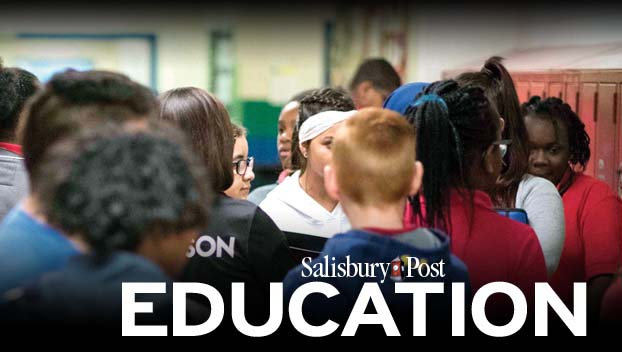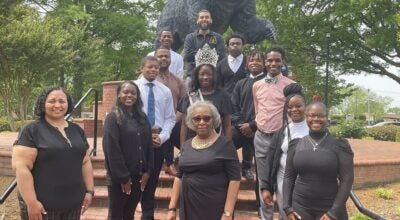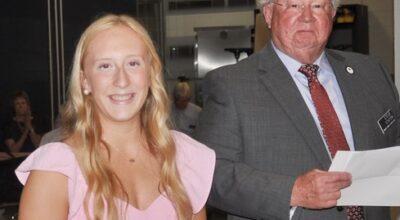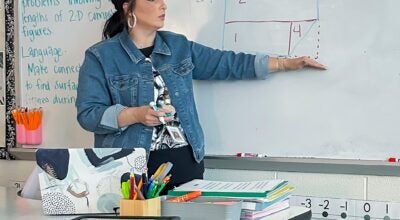RSS dives into planning, accountability in hours-long session
Published 12:10 am Sunday, June 27, 2021
SALISBURY — The Rowan-Salisbury Schools Board of Education and administrative leaders on Thursday made a day of talking through where the district is headed.
As part of the eight-hour agenda, Superintendent Tony Watlington walked the board through reams of data and the process for creating the district’s strategic plan — a goal he set shortly after being tapped as the district’s new superintendent. Watlington talked about marrying the district’s special renewal status with strategic planning to produce results.
The district is working with consulting company Insight Education Group on the plan. Company co-founder Jason Stricker attended the board retreat as well.
The timeline for the plan is to begin implementation this fall. Rowan-Salisbury Schools created a steering committee made up of staff, parents, students, community members and the district’s administrative cabinet.
Data points for staff, community
Watlington on Thursday walked the board through more than a dozen data points on the community, staff and students — some of which he previously discussed in an April meeting of the school board, improving graduation and dropout rates.
The presentation also included a look at climbing enrollment in the district’s College and Career Promise Program, which allows high school juniors and seniors to take dual-enrollment courses with Rowan-Cabarrus Community College. Enrollment climbed from 566 for the 2016-2017 school year to 2,011 in 2019-2020. It dropped a bit during the pandemic — to 1,550 in the 2020-2021 year. Career and technical education credentials are up as well.
Not positive is the increase in schools in the district not meeting growth targets and the slow climb in low-performing schools after the district slashed that number in 2016. The academic woes are a threat to the district’s renewal status, which will come up for review by the state in 2023. Watlington has set his sights on reversing both of those trends.
The presentation dove into other factors, including food insecurity, overdose rates, life expectancy and diabetes compared to neighboring counties. Rowan County is at the bottom of the list in every category out of a list of 10 nearby counties.
Fewer people in Rowan County attain bachelor’s or graduate degrees as well, though the county is toward the middle of the pack on high school diploma awards. Many people here have some college education.
The district faces demographic issues as well. Its enrollment has been slowly declining for about a decade and the demographics of students have been changing while the community’s stay the same. The percentage of white students attending RSS schools is declining.
The N.C. Department of Public Instruction’s Teacher Working Conditions survey said 85% of teachers believes good places to work and learn. This statistic is in the middle of nearby districts, but Davidson County Schools showed 92% of teachers believed the same.
For the 2019-2020 year, RSS did not compare favorably to nearby districts in teacher retention, with more than 7% of the district’s teachers going to work elsewhere, the survey found.
The district ranks poorly compared to most nearby districts in starting pay and at the bottom of the list for veteran teachers. Principal salaries and pay for classified staff such as teacher assistants, custodians and bus drivers rank low as well.
The district also surveyed local stakeholders and received 1,611 responses. Of the people who responded, 57% were parents or guardians, 32% were employees, 8% students and only 3% were miscellaneous community members. Early learning and staff pay were at the top of the list of priorities chosen by respondents.
Four themes also emerged for the district to focus on: engaged learners, outstanding schools, system-wide supports and efficiency. Smaller categories within the larger themes were improving academic achievement, reducing the number of low-performing schools, increasing enrollment, increasing the number of high-performing staff and developing a new accountability model.
Watlington spoke about ways RSS’ $26.3 million federal grant received last year lines up with planning goals — funding staff development, teacher incentives, signing bonuses in at-risk schools and competency-based pilot programs at Morgan Elementary and South Rowan High.
The grant, called “Accelerate Rowan” is intended to create teacher incentives to push forward the district’s work on renewal.
Connecting with students
Watlington said RSS has been moving toward a competency-based model, and the district wants to research it through pilot programs. The model changes how students progress through content, giving them a personalized approach rather than a block of content delivered to a group at the same pace.
Part of the plan in motion is communication strategy, pushing out as much information to people as possible.
“When you think about moving an organization, it requires all of those stakeholders to understand, not just buy into,” said Stricker, who is working with the district as a consultant.
Watlington said the most important factor in student success is their teacher.
“How do we get the best teachers connected with some of the most needy students?” Watlington asked the board, adding that would be the best strategy to invest in.
The way to do that, Watlington said, is to take the millions in grant funding and apply some capitalist principals by recruiting some of the best faculty in the area and “pay them a lot of money.”
“You’ve got to say we’re going to do what it takes to get a first-round draft pick for X school and X kids,” Watlington said.
While trying to improve academics, the district is contending with two accountability models: the traditional state model based on end-of-grade and standardized tests as well as the local model it is developing through renewal.
New model for accountability
Chief Schools Officer Kelly Withers walked the board through work on the new model and goals district has set for accountability. She dispelled the idea that renewal means less accountability and talked about the ways the district is looking to track how students do in the long run.
The model is framed through the district’s renewal system and split into academics, interpersonal skills and unique life goals.
The district is setting outcome goals that fit into each area it wants to track. For unique life goals, it wants 90% of students of elementary students to explore new areas of interest and create portfolios showing they did so.
Withers said the goal is not to ask elementary students to make career decisions. Instead, RSS wants show them some fields they may be interested in.
Moving up to middle school, the districts wants 90% of students to be exposed to career options that line up with their interests and create portfolios for those as well.
In high school, the district wants 95% of students to get a work-based experience such as an internship tied into what they want to do after they graduate and for 100% of students to have a plan when they leave high school, whether that is to be enrolled in higher education, enlisted in the military or employed.
For academics, schools want 90% of students between third and 11th grade to demonstrate growth. For interpersonal skills, the district wants every school to track improvements in students, teacher feedback to students and, once again, portfolios to record their growth.
Withers said the district is not only interested in what students plan to do when they finish school. It wants to track how well they perform in their pursuits, noting many students drop out of college or wash out of the military in basic training.
The steering committee for the strategic plan will meet later this month and in July to continue work on the plan. This weekend, teacher-led design teams, principals and administrative cabinet are on retreat at Lake Junaluska for a planning retreat.







